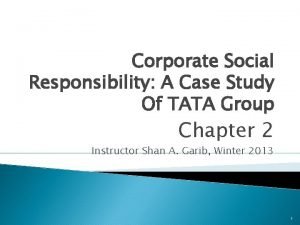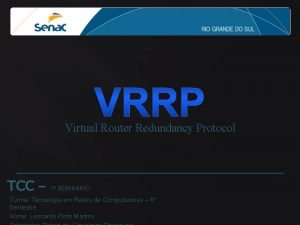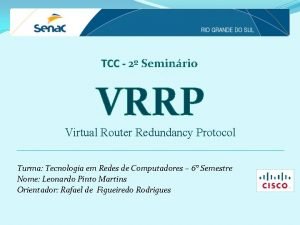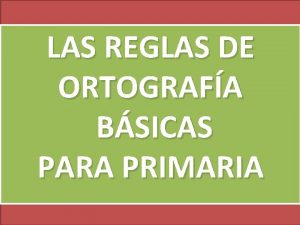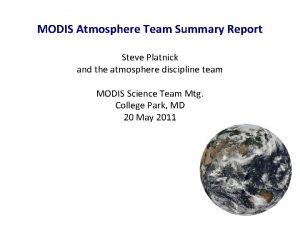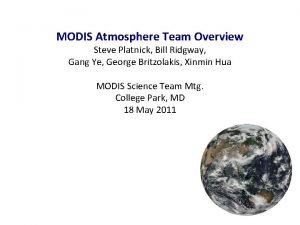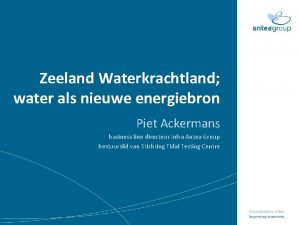Atmosphere Summary S AckermanS Platnick 21 Nov 2019




- Slides: 4

Atmosphere Summary S. Ackerman/S. Platnick 21 Nov. 2019

Atmosphere Report out A-SIPS has been a wonderful partner in developing products • Science team fully responsible for science code, enabling efficient product development and delivery, and clear line of responsibilities. Flexibility in science team code development and implementation is a strength of A-SIPS (and MODAPS). • A-SIPS developed critical tools to support colocation, aggregation, and assessment and validation using multi-instrument datasets (A-Train, etc. ). • Data holdings in A-SIPS are extensive (e. g. MODIS, CALIOP, VIIRS, Cr. IS, GEO, ancillary, etc. ). • A-SIPS investments should be leveraged for future atmosphere algorithm efforts (such as combined geostationary and next generation LEO instruments). • Need clarification on ‘orphaned’ products. Processing/resources for products from non-NASA assets • A-SIPS fully capable of processing NOAA-20 (fusion implemented, other projects in spring 2020) and ABI. • NASA R&A program has always made use of non-NASA and international operational assets (imager examples include AVHRR, ISCCP, ERBE/CERES radiation budget team, but examples included other sensor types). SNPP/JPPS is the (partial) EOS follow-on; stewardship of NASA data records into the new observational assets is in NASA’s strategic interest. • Beyond EOS continuity, ROSES 2019 GEO solicitation and ACCP study plan assumes JPSS/GEO continuity for Po. R, etc.

Atmosphere Report out Product Documentation and Publications (ATBD/User Guide discussion) • Atmosphere team agreed at last meeting to combine ATBD/User Guide to make documentation useful for science investigators. Current documents for MODIS standard and continuity products are posted to the rebranded/updated Atmosphere Imager web site. Level-3 • Yori developed by A-SIPS (so science determines aggregation). Used for cloud product aggregations. • Atmosphere Imager web site providing browse imagery Reflective Band Calibration between instruments • Aerosol and Cloud adjusting sensor differences similarly. Adjustment factors are archived in the L 2 cloud products, aerosol will do that in their next release. • How to leverage other efforts, such as GSICS, other discipline teams, etc. • How to handle 3 -satellites not yet determined (MODIS Aqua is the current reference). Presentations/Posters by Science PIs mostly using MODIS products • Quality products, easy access. • Satellite observations support field programs Transition of MODIS products from HDF 4 to Net. CDF may be more problematic for user community than anticipated

Atmosphere Report out Transition continuity algorithms to Senior Review? • Enabling capabilities (i. e. atmosphere products) are best suited as a “directed” activity. NASA PMs capable of evaluating recent algorithm development and continuing needs. • If add to senior review… • Should not be solely for maintenance activities as defined in SR 17. • Continuity algorithms require ongoing evaluation, validation and development (iterative process). • All Atmosphere continuity products are leveraging MODIS TASNPP refinement/development support. • Current division between algorithm maintenance (SR) and improvement (ROSES) was confusing for review panel and proposers. • Continuity products intend to use non-NASA assets which are not part of the NASA SR. • Project Scientist concerns: how to codify an approach before AGU SR Kickoff meeting (3 weeks), including budget implications. World. View a valuable resource, adding more satellite observations valued.
